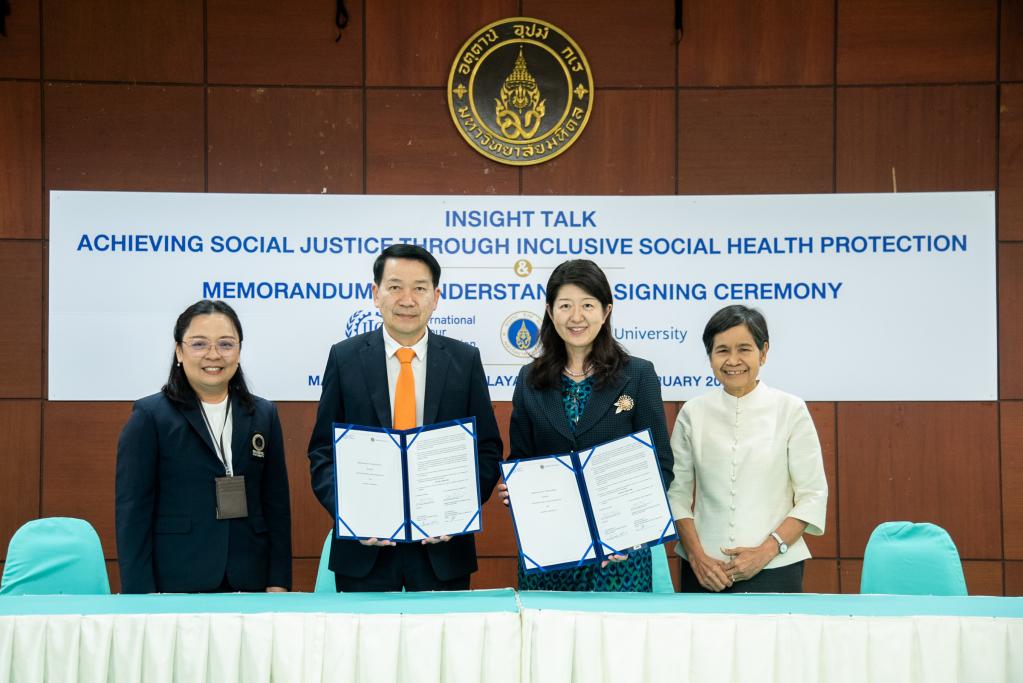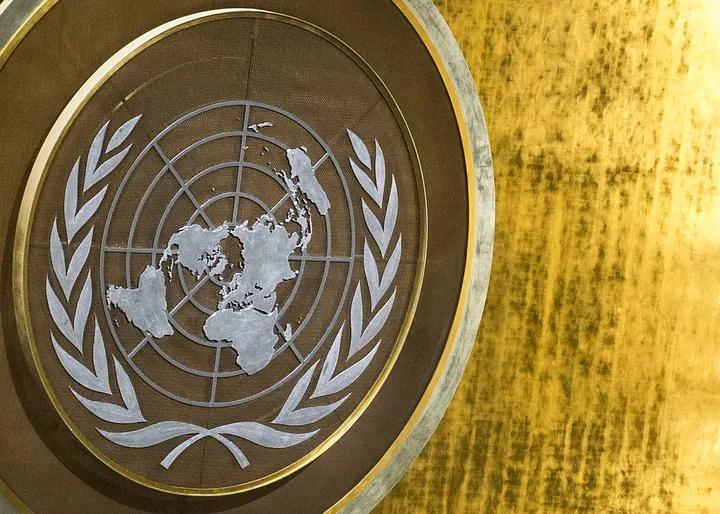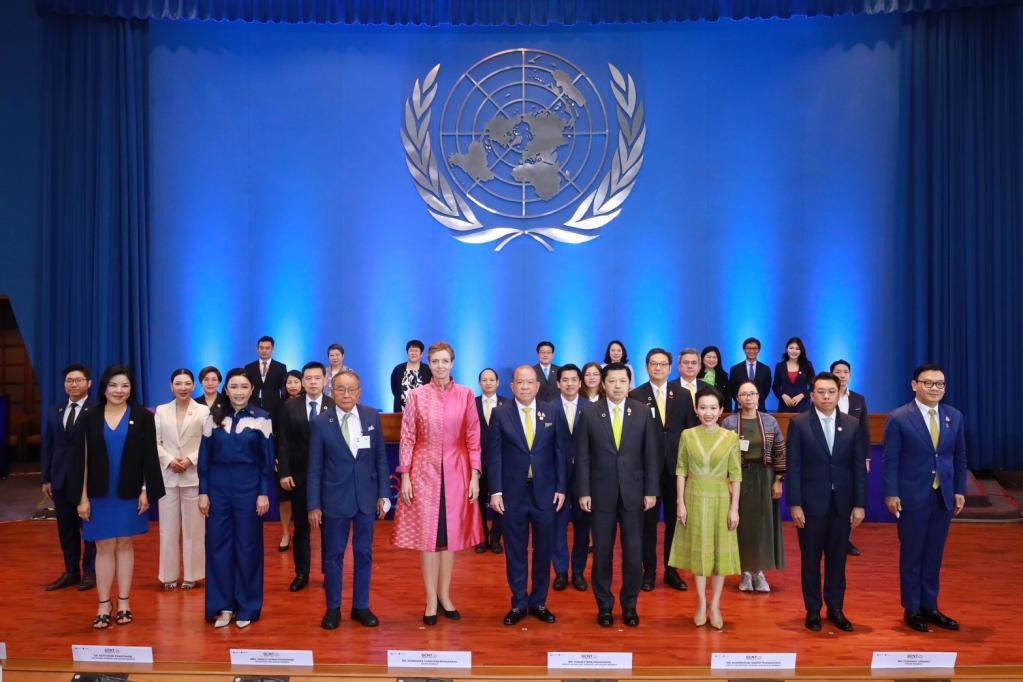Latest
The Sustainable Development Goals in Thailand

By leveraging Mahidol University’s academic expertise and the ILO’s policy leadership, this partnership will play a pivotal role in addressing social protection gaps and promoting sustainable health financing solutions. The MoU outlines key areas of collaboration, including the ongoing support to CONNECT, a regional network for Social Health Protection and the further development of the Master of Primary Health Care Management (MPHM) course with a special track on social health protection.
The MoU facilitates South-South and Triangular Cooperation, encouraging knowledge-sharing and mutual learning among countries in the region, through the CONNECT network. Mahidol University and the ILO support the platform, through joint research projects, training programmes and policy dialogues, hence providing a space for countries to exchange best practices and innovative strategies for enhancing social protection systems. “Today, we are privileged to reaffirm our partnership with Mahidol University, a collaboration that exemplifies the power of academic partnerships in driving progress,” said Kaori Nakamura-Osaka, ILO Assistant Director-General and Regional Director for Asia and the Pacific. “This partnership underscores the importance of academic collaboration and long-term training to develop new generations of leaders in social health protection, who will promote international principles for inclusive social health protection systems.”
“The signing of the Memorandum of Understanding between the ILO and Mahidol University marks a pivotal moment in our partnership. It formalizes our shared commitment to enhancing capacity-building, research, and the exchange of knowledge for social health protection. This partnership is a testament to what we can achieve when we work together across sectors and disciplines,” said Prof Piyamitr Sritara, MD, FRCP, President of Mahidol University. The ASEAN Institute for Health Development (AIHD) at Mahidol University will serve as a key hub for the implementation of the MoU’s objectives. AIHD’s extensive expertise in global health and its interdisciplinary approach will facilitate collaboration among universities, governments, and organizations at national, regional and global levels.
CONNECT is a pioneering multi-stakeholder network of public institutions and non-for profit organizations in the Asia Pacific region, working together to bridge the gaps in social health protection. It was established in 2019 by the ILO, Mahidol University, and other partners including Thailand Health Insurance System Research Office, Viet Nam Health Strategy and Policy Institute, Korea Institute for Health And Social Affairs and Seoul National University.
The Master of Primary Health Care Management (MPHM) was launched in 2020 by AIHD with the support of ILO. It is an innovative 1-year Master’s Degree designed to enhance the capacity of social health protection practitioners in the region. To date 21 students from 7 countries have benefited from fellowship to the Master’s degree. , filtered_html





Jeyda, as she's known, is a second-year medical student at Prince of Songkla University. She is also one of the 35 young people selected to serve on Unicef Thailand's Young People Advisory Board (YPAB) for 2025/26 -- a platform launched by Unicef in 2021 to ensure youth voices actively shape policies and programmes that affect their lives. The YPAB brings together members from diverse backgrounds, including children living in urban and remote areas, stateless children and children with disabilities. "Driving change has to be a collective effort," said Jeyda. "Being here made me realise I'm not alone. I met people who also want to create change in society and that gave me hope."
Last month, Unicef hosted a three-day YPAB Leadership and Advocacy Camp in Bangkok. The camp brought together young leaders aged 14 to 22, chosen from over 400 applicants across Thailand. Over the course of workshops, discussions and community visits, the YPAB members explored key social issues -- including mental health, child protection, education, climate and participation -- while learning from national experts, Unicef staff and one another.
For Jeyda, the experience was about more than just learning. It offered healing. "One powerful lesson I gained was seeing the beauty in people -- not from how they look, but through their stories," she said. "Some shared things they had never told anyone before. That reminded me that everyone has value."She also learned just how deep the misunderstanding around mental health still runs. During a community visit in Bangkok, Jeyda spoke with teachers and adults who struggled to identify basic signs of depression. Some adults described depression as a form of "insanity"."That kind of language reflects how deeply misunderstood mental health still is," said Jeyda. "If adults don't understand it, how can children know if they are experiencing depression or when to ask for help?" As someone who has experienced both depression and bullying, Jeyda knows how isolating silence can be. She remembers the period of darkness that took away her joy in life. It wasn't until she found support -- from her family, from therapy, from within -- that she began to heal, a journey that took her four years.She wants to ensure other children don't have to wait that long.Together with fellow YPAB members, Jeyda is now advocating for a mental health support system in schools -- one that involves students, teachers, parents and school leaders. Her vision is not just reactive but preventive: creating awareness, reducing stigma, and ensuring children know how and when to seek help.She's already seen the impact of early efforts. As a student council president, she helped introduce mental health awareness activities in her school. "We found that children didn't know when to seek help or felt their problems were 'too small' to talk about," she said. "But after we raised awareness and shared more information about mental health, more students began reaching out and using the support services available."If Jeyda's focus is on inner resilience, then Palathip Pimsuwan's is on opportunity -- especially for those who have been left behind.Born in a rural community in Uttaradit province and raised by his grandmother after his father passed away, Palathip came close to dropping out of school himself."We had no income," he said. "I had to rely on scholarships to continue. None of my friends made it past Grade 9."Palathip is now 18 and has defied the odds. He is a Royal Award for Outstanding Students recipient, a provincial youth leader and the president of his Subdistrict Children's Council. Joining Unicef's Young People Advisory Board is another remarkable achievement."Many children in my community face various challenges such as financial problems, negative attitudes, low motivation, peer influence and much more," Palathip said. "I want to work towards addressing these issues and creating better opportunities for them."During the camp, Palathip visited a low-income community in Bangkok. Expecting to see children out of school, he was surprised to find the opposite."The community was incredibly strong," he said. "Even though families were not wealthy, the drop-out rate is almost zero. Everyone pitched in -- including the temple which offers scholarships -- to help make sure children stay in school."After the community visit, Palathip and other YPAB members shared their experience and their ideas for action with 13 prominent experts in different areas. That experience reshaped his thinking. Education, he realised, doesn't always happen in classrooms. It happens when communities come together and children and young people are given options."We talked with experts about how to prevent children from dropping out," he said. "But one thing I took away is that maybe some children leave school for valid reasons. Instead of forcing them back in, we can create new options for them."He now wants to help shift public perception: that self-learning, informal education and skills-based training should be seen as valid alternatives -- especially for children whose families can't afford for them to stay in school full time."This shift could open doors for so many," said Palathip. "And today, knowledge is everywhere. It's not limited to classrooms."For both Jeyda and Palathip, being part of YPAB is not just an opportunity, it's a mission."I want to be an inspiration for children who are afraid to speak up -- to be their voice and show them that recovery is possible, and that their dreams can come true, just like mine did," Jeyda said.The idea of youth as partners, not just participants, is central to Unicef's approach, said Ploynapat Jaroenkocharit, Adolescent Development Officer at Unicef Thailand. "Young people are experts in their own lives. When youth participate meaningfully, the work becomes more inclusive and responsive."Unicef works with partners to create safe spaces for children and young people, supporting their initiatives, and ensuring their voices influence policies and programmes, added Ploynapat. "At the same time, we also help adults learn to listen, engage and take action, because true participation only happens when adults are willing to share power."Assist Prof Panom Ketumarn, a child and adolescent psychiatrist who took part in the camp as an expert, agrees. "Young people are getting more involved in mental health issues, especially in schools and communities. With support from teachers and school systems, this engagement has started to grow. It's also sparking peer-to-peer learning -- both within schools and between them."As this new cohort of YPAB members begins its two-year journey, the momentum is already growing. Supported by Unicef, past cohorts have helped shape child rights initiatives, contributed to climate change and online safety campaigns, and influenced education reform. This generation is ready to build on that legacy.For Palathip, his mission is about making sure no child is left behind. "I will start by creating a network of parents and children in my community and help them gain access to the scholarship and the opportunities I've had."As for Jeyda, the mission is clear: "I build a world where everyone feels safe to be themselves." Originally published by Bangkok Post, filtered_html
Hypertension, or high blood pressure, is often called the "silent killer" for good reason. It creeps up with no symptoms, quietly damaging the heart, brain, kidneys, and blood vessels. It doesn't just hurt individuals and families -- it burdens our health system with avoidable costs and robs the economy of productivity through absenteeism and premature death.
The burden of hypertension in Thailand is already enormous and growing. One in four Thai adults has high blood pressure. Three out of four people with high blood pressure do not have it under control, putting them at risk of heart disease, stroke, kidney disease and dementia.Yet hypertension can be avoided and controlled, as other countries have shown.Twenty-five years ago, Thailand and South Korea were at the same starting point. Both countries had a blood pressure control rate of just 8%. Today, South Korea boasts the world's highest rate at 62%, while Thailand lags far behind at 23%. South Korea has managed to reduce its death rate from stroke by an astonishing 83%. In contrast, stroke remains the leading cause of death in Thailand, and a staggering 58% of strokes are attributed to uncontrolled blood pressure. Canada, Costa Rica, and other countries have also delivered comprehensive national hypertension programmes and shown notable improvements with control rates over 50%.The financial consequences of low hypertension control rates are severe. Treating complications from hypertension -- including stroke rehabilitation, heart surgeries, and lifelong dialysis -- is expensive. Thailand's universal health coverage (UHC) system absorbs much of this cost, but the economic toll from lost productivity, caregiving responsibilities, and long-term disability is also immense, particularly because one-third of hypertension-related deaths affect people below the age of 70. In a country proud of its health achievements, one must ask: why is a preventable and treatable condition allowed to wreak such havoc?Thailand has built an impressive health infrastructure. Its primary health care network is among the strongest in the region. The country provides free health care for all. There is a robust electronic health system and a highly trained health workforce. All the tools needed to address this hypertension crisis are available. But they are not used to full effect.Experience in South Korea and other countries shows us what's possible. There are three key lessons we can draw from their successes.First, Thailand should singularly focus on improving blood pressure control from the current level of 23% to at least 50%. While the country has already implemented universal blood pressure screening for all patients visiting a health facility, many patients with high blood pressure are not being linked to care and are slipping through the cracks. Thailand's million Community Health Volunteers can be used to not only support accurate blood pressure measurement at health facilities but also efforts to link people with hypertension to treatment and continuing care. At the same time, incentive structures could reward high-performing clinics that successfully control blood pressure.Second, research and experience in various countries show that simpler treatment protocols and combination pills help achieve better adherence and blood pressure control. If patients need to take fewer pills, or even a single pill, they are more likely to stay on treatment. The Thai Hypertension Society recommends a single-pill combination therapy in which two or more medications are combined into one pill. While these options can be more expensive, the benefits outweigh the costs.Third, prevention is just as important as diagnosis and treatment. Thailand has been recognised by the WHO for eliminating trans fat from its food system and for its efforts on obesity management. It is currently taking bold, commendable steps toward prevention: banning marketing of unhealthy food to children and introducing a salt tax -- a first for the region. Next, the country should consider promoting potassium-enriched, low-sodium condiments, which are proven to lower blood pressure at the population level. These public health measures will go a long way in steering people toward healthier choices, including to prevent and control hypertension.Thailand has a proud history of public health leadership. From slashing childhood mortality, to pioneering HIV prevention, to enacting some of the world's strongest tobacco control policies, the country has consistently shown that when it commits, it leads.But today, the biggest killers in Thailand -- stroke and heart disease -- are not being met with the urgency they demand. Hypertension is the common thread linking both.The solutions are known, the tools are available, and the time is now. On this World Hypertension Day, we urge Thailand to act decisively and ambitiously to control high blood pressure. Let's stop the silent killer before it claims more lives.Published to mark World Hypertension Day on 17 May, this op-ed is co-authored by Dr Jos Vandelaer, WHO Representative to Thailand, and Dr Renu Garg, Senior Vice President for Cardiovascular Health at Resolve to Save Lives., filtered_html



Where we work: The UN’s programmatic interventions
The UN is implementing 0 programmatic interventions during the ongoing programme cycle. The map below displays the number of programmatic interventions per location (note that a programmatic intervention may be linked to more than one location). Click on the number on the map to get a summary description of the programmatic interventions. Programmatic interventions may be linked to the national level or specific locations/sub-national level. Note that some interventions linked to specific locations might also have components at the national level, even if they are not categorized as country-level interventions. Click on “Show location details” in the bottom right corner to view a summary table with locations, the number of programmatic interventions, and the UN entities working in those locations. For definitions of programmatic interventions, please refer to the Glossary section.






















